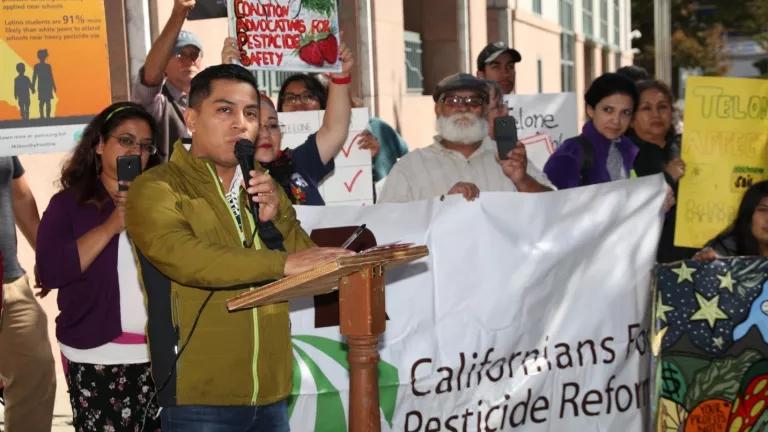More Work Ahead to Protect California from Toxic Pesticides
The state's Department of Pesticide Regulation and Department of Food and Agriculture must end the use of toxic pesticides and invest in diversified organic and regenerative agriculture.

Organic, diversified crops at Crystal Bay Farm, Watsonville, California. The chlorpyrifos alternatives work group’s action plan identifies numerous non-chemical alternatives to chlorpyrifos for cole crops and floriculture, among others.
A new report outlines a vision for California that supports strong agricultural economies, resilient food systems, and healthy communities. We need swift action to bring that vision to life.
When California banned the brain-toxic pesticide chlorpyrifos earlier this year, the state also created a cross-sector work group to explore alternatives to chlorpyrifos. That work group’s action plan marks a significant, but preliminary, step toward a healthier food system in California. Now, to fully realize a vision for a safer future, the California Department of Pesticide Regulation and California Department of Food and Agriculture must end the use of toxic pesticides and invest in diversified organic and regenerative agriculture.
The plan proposes essential actions to protect health and the environment in the near-term, including clear communication about the chlorpyrifos ban, monitoring of ongoing pesticide exposure patterns, and reporting on how pest management practices shift.
Moving forward, the state should also strongly discourage the use of chlorpyrifos’ chemical cousins—other organophosphates and carbamates—and other highly toxic pesticides listed in the plan. We know this is possible: the plan identifies non-chemical alternatives for the vast majority of the crop-pest combinations for which chlorpyrifos is currently used in California, and all of these crops are also grown organically.
With careful implementation, the plan recommendations could also lay the groundwork for a transition away from chemical agriculture. The plan recommends more support for technical assistance and research, which could advance organic and regenerative agriculture and ecosystem-based approaches to pest control. The state should also act on recommendations to create jobs, protect public health, and safeguard our environment by investing in research and training on non-chemical alternatives, plant health systems approaches, beneficial insects, water and nutrient management, crop system diversification, and soil health.
The plan recognizes that it will take substantial work to create a common long-term vision for safe and sustainable pest management in California, and the needs and perspectives of farmworkers and communities who experience impacts from pest management practices must be better understood and addressed. We agree.
As a next step, DPR should promptly convene a new alternatives work group to focus on a comprehensive shift away from agriculture reliant on toxic pesticides to a resilient food system built on healthy soil and ecosystems. To ensure the work group truly acts in the public interest, it must include more representatives from impacted communities, as well as organic farmers who are leaders in non-chemical pest management.
We urge the state to treat the plan’s long-term recommendations with urgency. Every day more people are exposed to toxic pesticides, and we must act quickly to identify holistic solutions.



